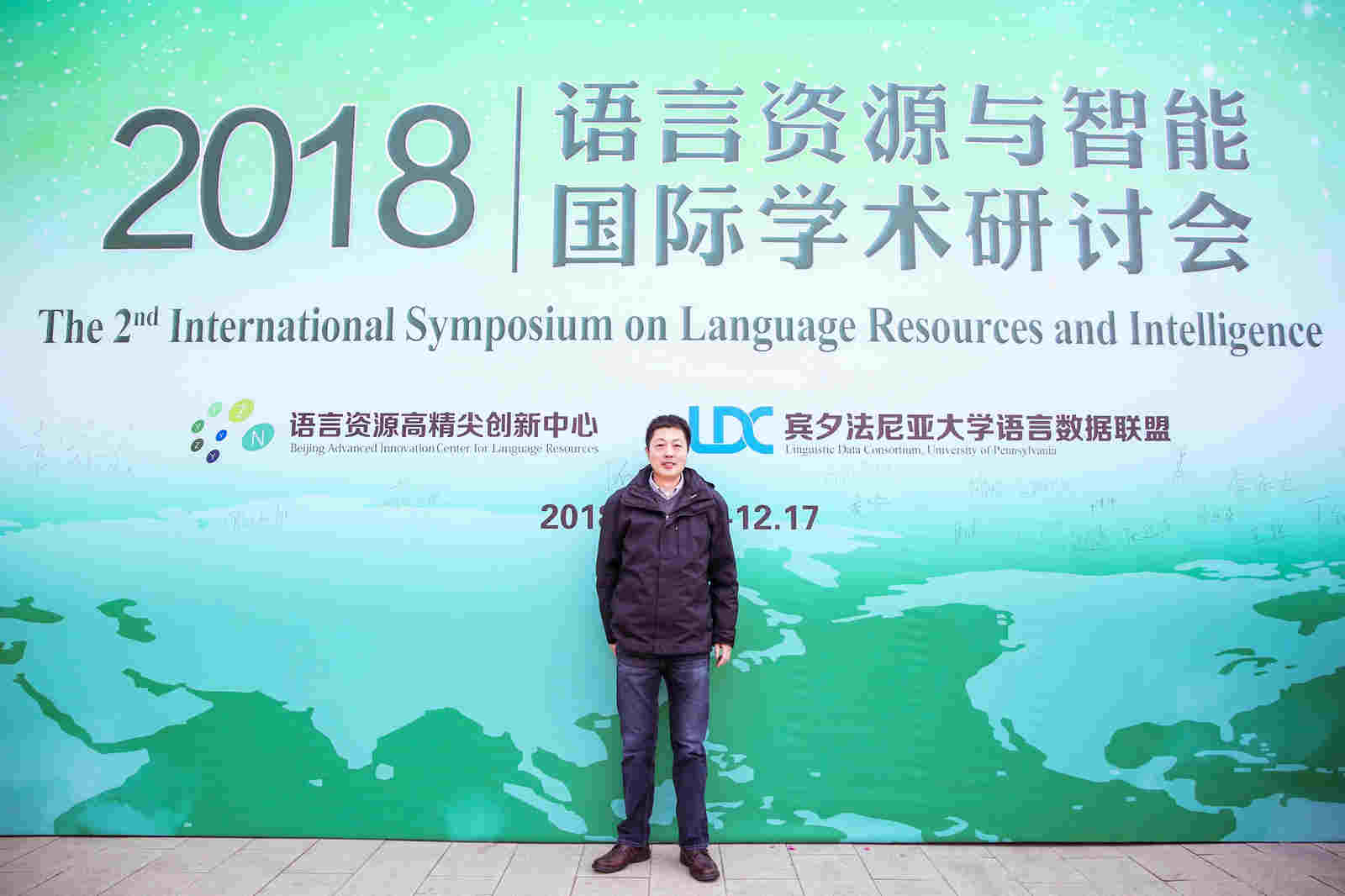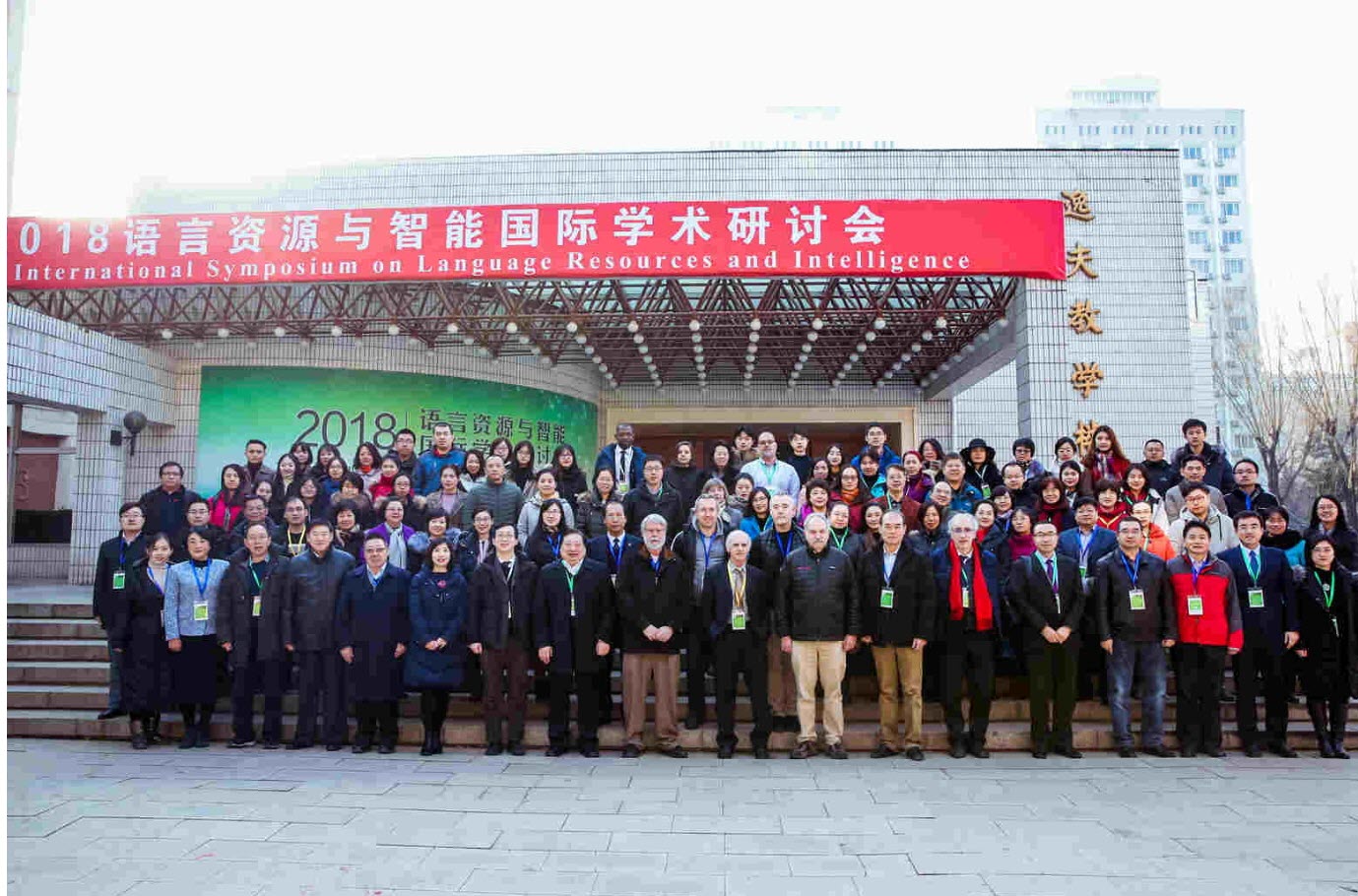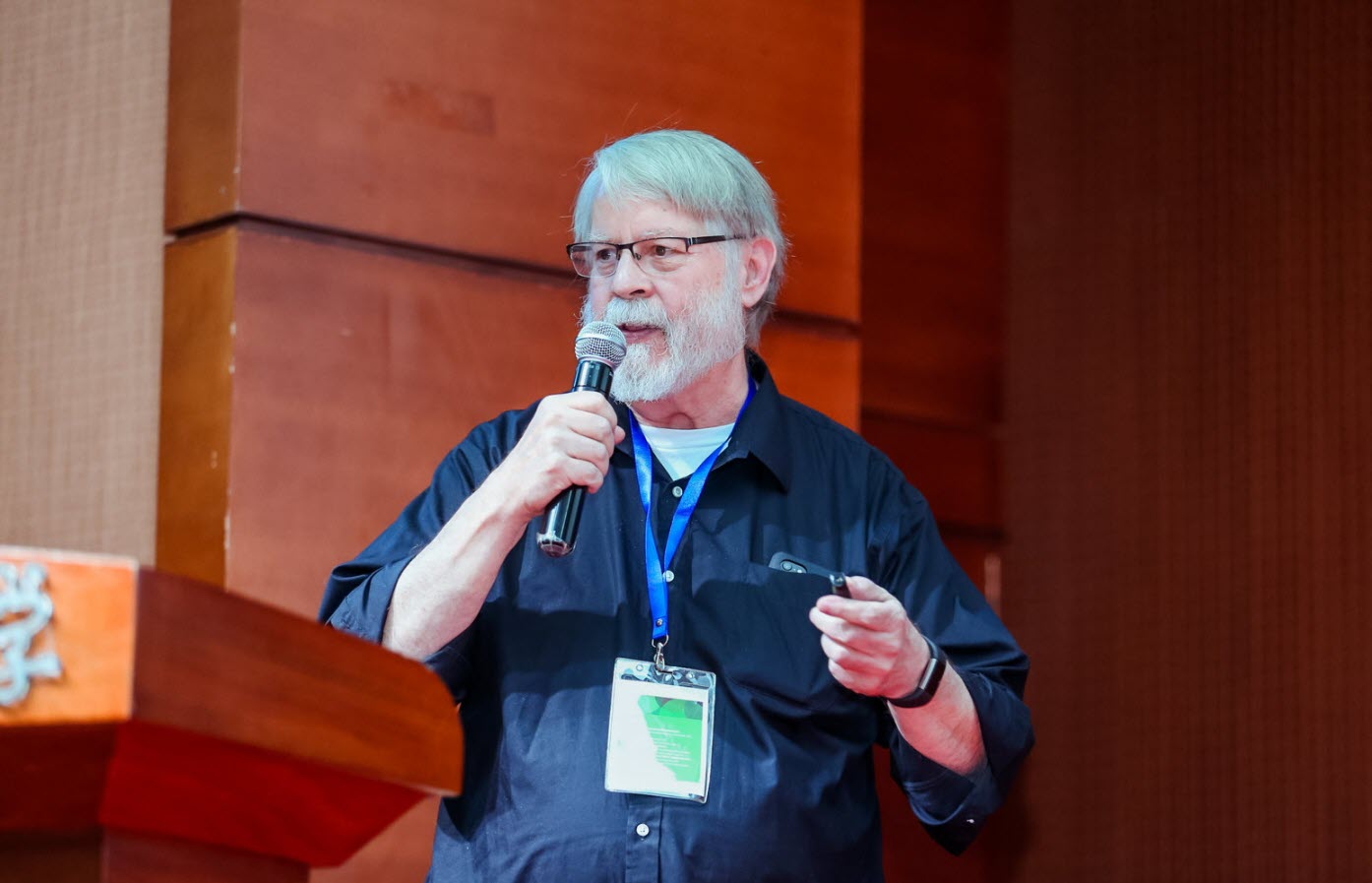Beijing Workshop on Language Resources
« previous post | next post »
I'm now at the second day of an event with the long name "Second International Workshop on Language Resources and Intelligence". The first day was at Beijing Language and Culture University, where they set up an impressive mural on the wall outside the workshop venue. Here's a picture of my colleague Jiahong Yuan standing in front of it:
The second day of the workshop, where I'm sitting at the moment, is being held at the Penn Wharton China Center.
Three years ago, Penn Global gave the LDC a grant to organize a series of workshops in China on language variation and related topics, to be held at PWCC. The first year's workshop was an opportunity for us to present some of the work we'd done with colleagues in China, and it led to an invitation from colleagues at Peking University to join them the next year in a two-day workshop, with one day at Peking University and one day at PWCC.
For this year's meetings, our colleagues at Beijing Language and Culture University and the Beijing Advanced Innovation Center for Language Resources invited us to join them in a similar two-day workshop, one day at BLCU and one day at PWCC. Here's the group picture from the first day, which was 12/16:
The BLCU organizers arranged for a photographer to take many pictures and upload them in real time to WeChat, more than 280 in total. Here's one taken during my presentation:
The presentations cover a wide range of topics — here's the second-day schedule with authors, titles, and abstracts
When I have a chance, I'll post some links to the first-day program and the presentations.



Jenny Chu said,
December 16, 2018 @ 10:37 pm
Not only this symposium but many events in China have extremely long, unwieldy names. What's with that? Does it sound simpler in Chinese?
[(myl) This is a general property of academic language around the world. A random selection:
"3rd International Conference and Expo on Diamond, Graphite & Carbon Materials", Miami Fla.
"10th International Workshop on Waldenström’s Macroglobulinemia", New York City.
"34th North American Conference on Molecular Beam Epitaxy", Banff.
"3rd North American Conference on Industrial Engineering and Operations Management", Washington DC.
"Workshop on Community-based Language Research across the Americas", New York City.
"2019 Annual Conference of the North American Chapter of the Association for Computational Linguistics", Minneapolis MN.
]
Victor Mair said,
December 17, 2018 @ 12:41 am
@Jenny Chu:
No, it does not sound simpler in Chinese. It's just as long and clunky and cumbersome in Chinese as it is in English, if not more so. Notice that they have an extra "xuéshù 学术" ("academic") thrown in there before "symposium", but only in the Chinese, when they really don't need it.
Why do they do it? Lots of reasons:
1. longer is more impressive
2. they want to touch as many bases as possible, makes the meeting sound more grand, glorious, and important
3. "international" is highly desirable (government funding may depend on it)
4. they like the way those titles roll off the tongue
5. long titles make for very impressive banners in front of buildings and meeting halls
6. with repetition of such long titles to refer to in speeches and papers given at the meeting in question, it means the speakers have to think that much less to come up with pronouncements of substance
I've been to hundreds of academic meetings in China; they nearly all have titles similar to this one.
Andreas Johansson said,
December 17, 2018 @ 2:30 am
I guess I'm overexposed to academese, because the title didn't strike me as particularly long or tortuous.
B.Ma said,
December 17, 2018 @ 6:18 am
Without the 学术, they would have had to put the line break between 智 and 能 on that mural with the photo of Yuan :)
Victor Mair said,
December 17, 2018 @ 6:34 am
For the titles of hundreds of conferences, workshops, and exhibitions worldwide, see Conference Monkey. Some are long, some are medium size, but most are short. Those in China do tend to be long. Those in the United States and Europe tend to be short.
Gabriel Holbrow said,
December 17, 2018 @ 8:51 am
Not language-related (please forgive me) but the map in the background of the pictured mural is… well, intriguing. Nicely attractive and fitting from a graphic design standpoint, but geographically a mess. It looks like the designers took a Robinson projection, or other moderately size-accurate world projection, centered on the Greenwich meridian, but then cut it up and re-spliced it to have China in the center. Along the way, the Pacific Ocean got dramatically shunk, and the Aleutian islands got to become direct stepping stones to (the actually much farther south) Hokkaido.
Victor Mair said,
December 17, 2018 @ 9:51 am
Good eye, Gabriel! The Pacific Ocean is weirdly small, and those other details you noticed are also telling. India seems reduced in size, and there are other anomalies.
Peter B. Golden said,
December 17, 2018 @ 11:19 am
It has become increasingly common in Russian and Ukrainian to preface any conference with the term "scientific" (научная конференция, наукова конференція) and if "international" (международная. міжнародна) – even better. A long descriptive title usually follows. The practice has been picked up in Central Asia. Thus, the book resulting from an international conference on the Qïpčaqs in 2013 in connection with the "Days of Turkic Culture and Literature," bore the clunky title in Qazaq: Түркі жазбалары мен мәдениеті күндери аясында Кимек мемлекетінің 1100 жылдығына арналған Еуразия қыпшақ тары: Тарих, тіл және жазбаескерткіштері халықаралық ғылми конференциясы материалдарыниң жинағы (A Collection of materials of the International Conference, The Kïpchaks of Eurasia: History, Language and Written Records dedicated to the 1100th anniversary of the Kimek State within the Days of Turkic Literature and Culture. This was followed by a Russian translation of the above and then a less accurate English version. These add considerably to the length of bibliographies.